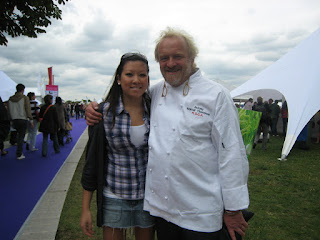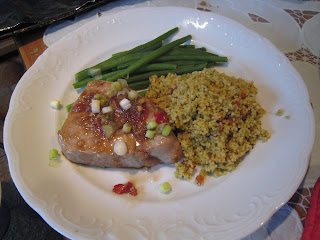Taste festivals happen in 12 cities Worldwide- Amsterdam, Auckland, Birmingham, Cape Town, Dubai, Dublin, Edinburgh, Johannesburg, London, Melbourne, Milan and Sydney with the unique Taste of Christmas also taking place in London. Each of the city’s top restaurants and chefs gather in a venue and visitors use the festival currency of Crowns to purchase taster portions of their signature dishes.
The size of the festival depends on the host city and Taste of London in particular is the capital’s largest food and drink event. I attended Taste of Christmas in 2008 and by comparison, Taste of London is much larger with an abundance of things to do and see.
Each year there is a specific theme within the Taste of London; in 2009 there was Taste of Thailand and this year was Taste of Malaysia. To celebrate the chosen country and its cuisine, there is a specific area in the event where you can experience various elements of their culture. For instance, the 2009 Taste of Thailand section of the festival integrated London’s most popular Thai restaurants with live demonstrations from Thai master chefs, a bar serving specially created Thai cocktails, cultural Thai dance shows and even The Tourism Thailand team for any travel advice in visiting Thailand!
Typically, each day the Taste of London festival runs is split into two sessions; lunch (12.00 -16.00) and dinner (17.30-21.30). Having visited Taste of London at Regent’s Park in 2009 and this year, I realised that although four hours sounds a lot, if you want to make the most out of the festival (and leave blissfully glutted!) you should plan your time. So here is my personal guide to organising your visit:
On arrival, you will receive the Taste Menu Card, essentially a small brochure that provides timetables (for all live demonstrations, master classes and musical entertainment), the list of restaurants with menus and a map of the event.
1. Select the Sessions you wish to Attend
Firstly, since each timetable conflicts with each other, you will have to be very selective about what sessions you want to go and see. I recommend focusing on the Taste Theatre where the Michelin starred chefs give live demonstrations. However, if you are more interested in tasting food, choose no more than 2 sessions from all the timetables as they can last up to 40 minutes each (which cuts into your eating time!).
Once you have decided on the sessions you will attend, mark the times on your map and remember to arrive early to ensure a seat.
2. Choose the Dishes you want to Taste
A table of all the dishes that are being provided by the restaurants (with their prices in Crowns) can also be found in the Taste Menu Card. Since it is impossible to taste every dish on offer, you will again have to be selective! I usually select mainly appetizers and main dishes with a few desserts to help with the sweet-savoury battle.
In previous years, most dishes have cost between 6 and 12 Crowns , bar a few icon dishes that can cost up to 40 Crowns (where 1 Crown = 50p). I find that to maximise the range of dishes you taste, the best tactic is to pool your Crowns with a few friends (ideally so there is 3 of you) and share each dish that you purchase. Even though you will have less of each dish, the range of dishes you try will be greater- and you can always repeat the dishes you loved!
3. Use the Event Map to Create a Route
I don’t mean this in a ‘sat nav’ way, but it is quite handy to mark on your map where you will get the dishes you selected. This way, you can pick up dishes en route to the sessions you attend and having food is a saviour when the live demonstrations make your mouth water!
Hopefully, with this guide in mind you can make the most out of any Taste Festival.
The next Taste of London event is set for 16th to 19th June 2011. However, if you can't wait, Taste of Christmas is running from 3rd to 5th December 2010 and is a great taster of what to expect from a Taste Festival.



















